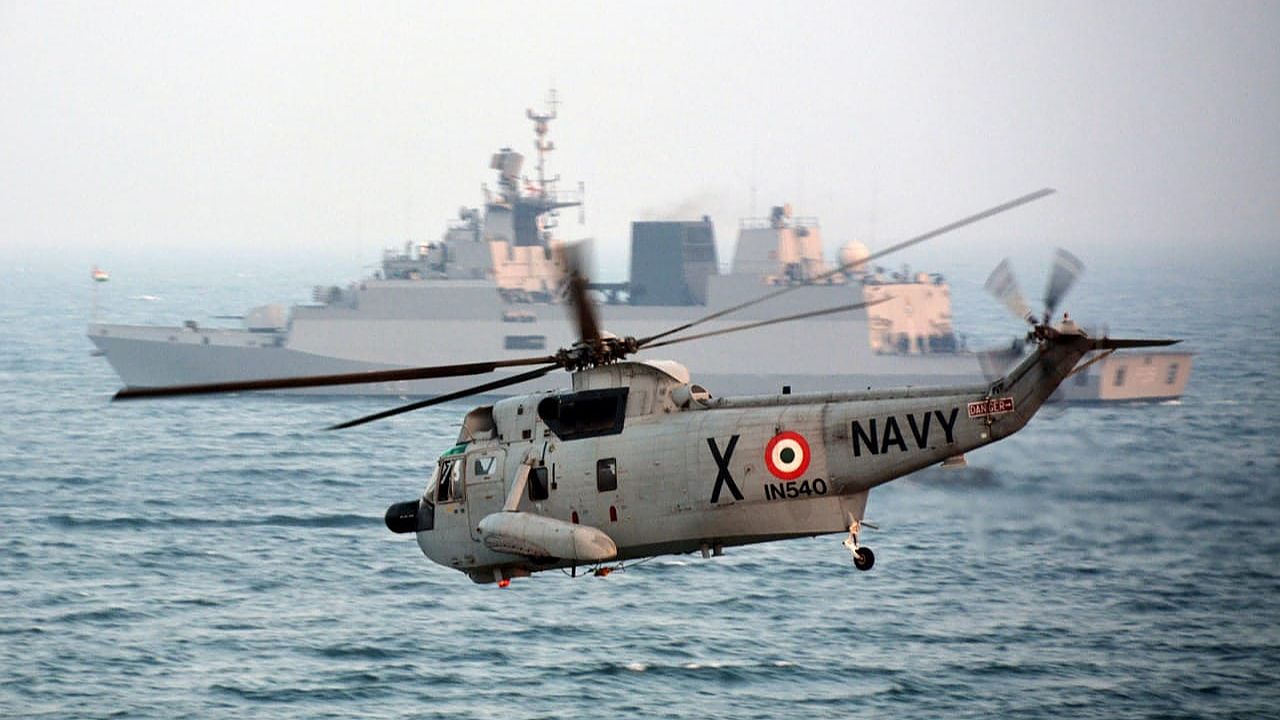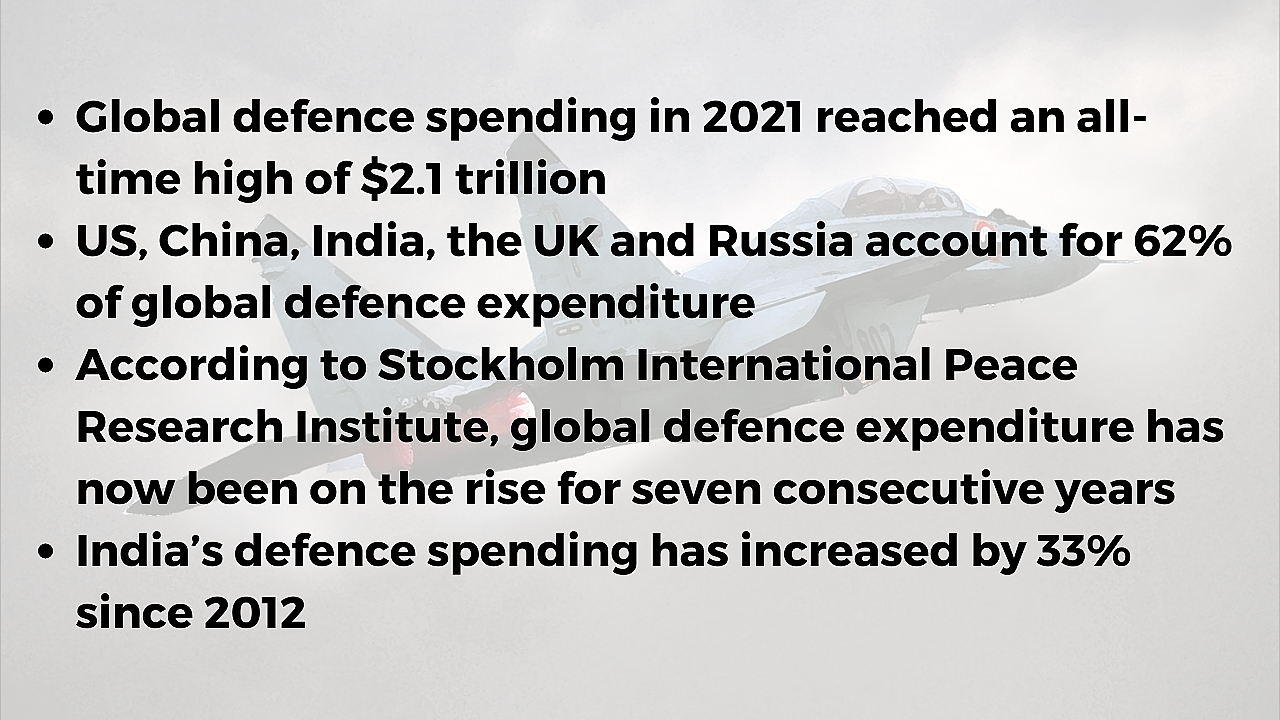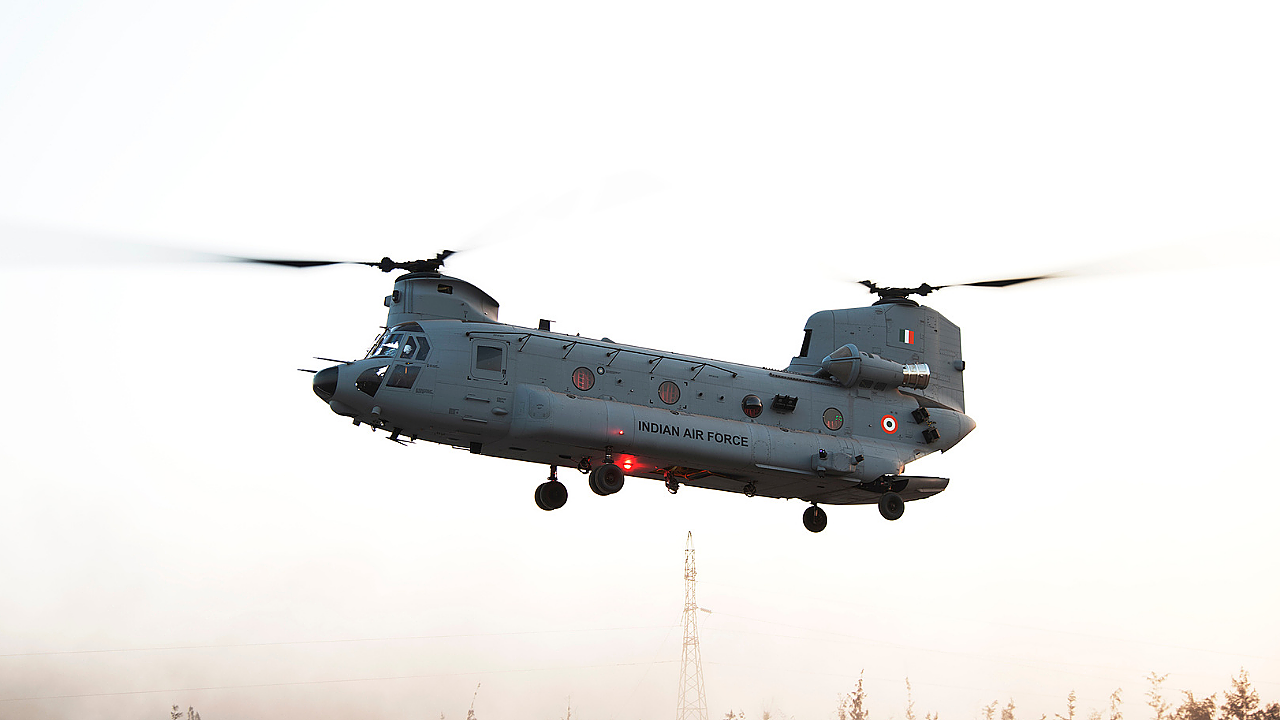
Rising global tensions and security concerns over the last few years have set off an increase in defence spending, reaching an all-time high of $2.1 trillion in 2021. The new data on global military spending was published recently by the Stockholm International Peace Research Institute (SIPRI), which tracks global defence expenditure. According to the SIPRI report, “the five largest spenders in 2021 were the US, China, India, UK and Russia, together accounting for 62% of expenditure.” This was the seventh consecutive year that defence spending globally had increased.
Increasing Defence Spending
The rise in global defence spending is a major challenge for India, whose population of 1.3 billion requires massive investments towards economic growth, infrastructure, healthcare, and education, making increased defence expenditure a greater challenge. “Even amid the economic fallout of the COVID-19 pandemic, world military spending hit record levels,” said Dr Diego Lopes da Silva, Senior Researcher with SIPRI’s Military Expenditure and Arms Production Programme.
Challenging Scenario
Despite decades of effort to increase India’s defence industrial base, the country’s military spending of $76.6 billion has been ranked third highest in the world by SIPRI. As per the report, India’s defence expenditure has increased by 33% from 2012. While India is faced with the unique security challenge of having to defend its territory against two nuclear-armed neighbours in China and Pakistan, joining the list of top five defence spenders in 2021 is a dubious distinction for a nation that has made strenuous efforts over the last three decades to reduce defence imports.
The increase in defence spending results from the import of defence equipment as indigenous platforms lag behind the current state-of-the-art. While progress has been made with developing indigenous strategic platforms such as missile and rocket systems, radars, warships, aircraft and helicopters, these platforms often feature significant amounts of imported systems and components.

While India’s defence expenditure does appear substantial, a large portion of this expenditure goes towards paying salaries, pensions, procurement, and upkeep of existing systems, often leaving little expenditure towards defence R&D. There is now a greater push to strengthen the indigenous arms industry. In the defence budget for 2021, 64% of capital outlays were earmarked for acquisitions of domestically produced arms. While a laudable initiative, access to advanced technologies across the globe is key to developing indigenous defence products that are globally competitive. A focus on defence production largely for domestic consumption coupled with India’s low defence export base also means that volumes of scale will be hard to come by.
US, China Lead The Pack
The US remains the preeminent arms producer and exporter in the world. The US military spending is well ahead of any nation on the planet and stood at $801 billion in 2021. According to SIPRI, this was a decline of 1.4% from 2020. To maintain its lead as the apex supplier of defence technology, the funding for military R&D increased by 24% between 2012 and 2021. To balance the funding needed for increased military R&D, the country cut back on arms procurement funding by 6.4% over the same period.
The increase in R&D spending over the decade 2012–21 suggests that the US focuses more on next-generation technologies. The US Government has repeatedly stressed the need to preserve its technological edge over strategic competitors, said Alexandra Marksteiner, Researcher with SIPRI’s Military Expenditure and Arms Production Programme.
China is the second-largest spender, with an estimated defence expenditure of $293 billion in 2021. The 2021 Chinese budget was the first under the 14th Five-Year Plan, which runs until 2025. China’s military spending has grown for 27 consecutive years, and its military budget for 2021 increased by 4.7% compared to 2020. China’s sustained growth in defence spending has resulted in an increasingly capable defence industry developing a wide range of platforms across air, land, and sea.

China’s growing assertiveness in and around the South and the East China seas has become a major driver of military spending in countries like Australia and Japan, said SIPRI Senior Researcher Dr Nan Tian. An example is the AUKUS trilateral security agreement between Australia, the UK and the US that foresees the supply of eight nuclear-powered submarines to Australia at an estimated cost of up to $128 billion. Japan increased its defence budget by 7.3% to $54.1 billion in 2021, its highest annual increase since 1972. Australia’s defence budget also increased to $31.8 billion in 2021. Germany, the third-largest spender in Central and Western Europe, spent $56 billion on its military in 2021.
Russian Defence Prowess To Decline
Russia’s reputation as a global supplier of defence equipment has been badly dented by the poor performance of its defence equipment in the war against Ukraine. The long-term impact of this could result in the decline of its defence industry, creating an opportunity for countries like Israel, Turkey, South Korea, and China to grow their defence exports. Russia increased its military expenditure to 65.9 billion in 2021, an increase of 2.9% when it was building up its forces along the Ukrainian border.
Russia’s military spending reached 4.1% of GDP in 2021, marking its third consecutive year of growth. High oil and gas revenues helped Russia boost its military spending in 2021. Russian military expenditure had declined between 2016 and 2019 because of low energy prices combined with sanctions in response to its annexation of Crimea in 2014, said Lucie Béraud-Sudreau, Director of SIPRI’s Military Expenditure and Arms Production Programme.
NB: Military expenditure refers to all government spending on current military forces and activities, including salaries and benefits, operational expenses, arms and equipment purchases, construction, R&D, central administration, command, and support.